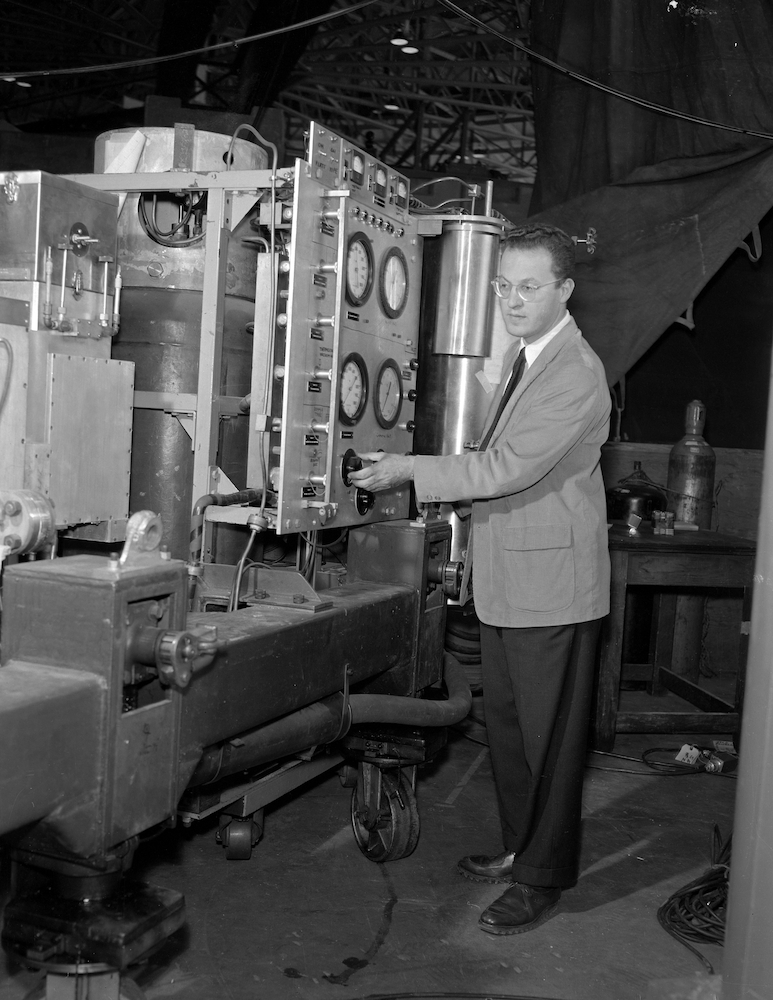Biography Submitted by Dr. Glaser to the Nobel Committee
I was born in Cleveland, Ohio on September 21, 1926, the son of William J. Glaser, a businessman, and his wife LENA. After receiving my early education in the public school system of Cleveland Heights, Ohio, I took my B. S. degree in physics and mathematics in 1946 at the Case Institute of Technology. My first original research is described in my bachelor’s thesis and consists of an electron diffraction study of the properties of thin metallic films evaporated onto crystalline metal substrates.
After serving as an instructor of mathematics at the Case Institute of Technology during the Spring of 1946, I began my graduate study at the California Institute of Technology in the Fall of 1946 where I finished my Ph.D. work in the Fall of 1949 and received my degree officially in physics and mathematics in 1950. My doctoral thesis research was an experimental study of the momentum spectrum of high energy cosmic ray and mesons at sea level.
In the Fall of 1949 I began my career of full-time teaching and research in the Physics Department of the University of Michigan, being promoted to the rank of Professor in 1957. In 1959 I became Professor of Physics at the University of California at Berkeley. My main research interest during this period has been the elementary particles of physics, particularly the strange particles. I examined various experimental techniques that appeared useful in this research and constructed a number of diffusion cloud chambers and parallel-plate spark counters before finally beginning to develop the ideas that led to the invention of the bubble chamber in 1952. Since that time I have been working on the development of various types of bubble chambers for experiments in high energy nuclear physics as well as carrying out experiments on elementary particles at the Cosmotron of the Brookhaven National Laboratory in New York and the Bevatron of the Lawrence Radiation Laboratory in California. These experiments gave information on the lifetimes, decay modes, and spins of the [see text for symbol] hyperon, [see text] meson and [see text] hyperon as well as differential cross-sections for the production of those particles by pions.
Other experiments yielded information on pion-proton scattering, parity violation in non-leptonic hyperon decay, and the branching ratios in positive K meson decay.
All of these experiments and technical developments of the past six years have been done in collaboration with a number of my thesis students and colleagues at the University of Michigan and the University of California in Berkeley, where I have been since 1959. These associates include J. Brown, H. Bryant, R. Burnstein, J. Cronin, C. Graves, R. Hartung, J. Kadyr, D. Meyer, M. Perl, D. Rahm, B. Roe, L. Roellig, D. Sinclair, G. Trilling, J. Van Der Velde, J. Van Putten, and T. Zipf. The researches were supported at first by the University of Michigan and later by the National Science Foundation of the United States and the United States Atomic Energy Commission.
Honors that have come to me include the Henry Russel Award of the University of Michigan in 1953 for distinction and promise in teaching and research; the Charles Vernon Boys Prize of the Physical Society, London, in 1958 for distinction in experimental physics; the American Physical Society Prize (sponsored by the Hughes Aircraft Company) for contributions to experimental physics in 1959; and the award of the honorary degree of Doctor of Science by the Case Institute of Technology in 1959.
I am a fellow of the American Physical Society and a member of the Sigma Xi and Tau Beta Pi honorary societies.
In 1960, I married the former Ruth Bonnie Thompson.
© the Nobel Foundation 1961
